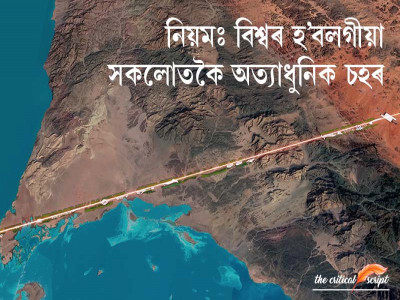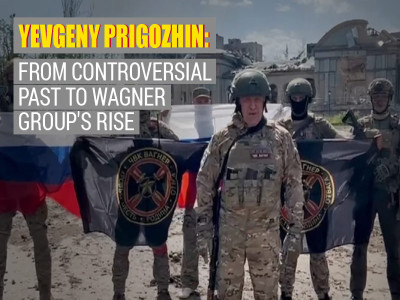
5 factors that led to Sri Lanka's economic crisis spiralling out of control
The challenges afflicting India's neighbouring country Sri Lanka are numerous, ranging from a lack of food, fuel, and medicine to long daily power outages and the cancellation of exams due to a lack of ink and paper.
The Backdrop
Sri Lanka
is currently experiencing a serious foreign exchange crisis, with declining
reserves preventing the government from paying for crucial imports.
Due to a
scarcity of printing papers and ink caused by Sri Lanka's economic crisis, two
of the country's largest newspaper publishing businesses were forced to close.
Due to the worst financial crisis the country has faced since its independence
in 1948, the Sri Lankan government has cancelled school exams for millions of
children after running out of printing paper.
According
to the latest World Bank figures, 5 lakh people in Sri Lanka have fallen into
poverty since the pandemic struck, a "major setback equivalent to five
years" of growth for the country.
The former
Sri Lankan government handed over the majority part of the Hambantota Port, the
country's second-largest port, in order to repay nearly $8 billion in Chinese
debts.
To raise $1.2 billion, the port was given to a Chinese state-owned firm on a 99-year lease. Sri Lanka recently requested a $2.5 billion loan and buyers credit from China.
So what went wrong: Key Factors
1. Drop-in tourism
The epidemic wreaked havoc on the tourism industry, which accounts for 10% of the country's GDP. Due to the foreign exchange crisis, several nations, notably Canada and the United Kingdom, have issued travel warnings to its nationals.
2. Chemical Ban
The government's decision to ban chemical fertilisers in order to make agriculture completely organic has had a negative impact, as organic farming cuts production by half. The matter has also been exacerbated by the hoarding of basics such as rice and sugar.
3. The Debt Trap
Currently, the country is engulfed in a massive foreign debt, owing China alone $5 billion. It also owes a lot of money to India and Japan; as of November, 2020 the country's foreign currency reserves were only $1.58 billion.
4. Foreign Exchange
With foreign exchange reserves falling from over $7.5 billion in 2019 to roughly $2.3 billion in February 2022, the supply of foreign exchange has been harmed, increasing the amount of money Sri Lankans have had to pay to get the currency they require. As a result, the value of the Sri Lankan rupee has dropped.
5. Import Dependence
Sri Lanka's excessive reliance on imports for critical products such as sugar, pulses, cereals, and pharmaceuticals has exacerbated the country's problems.
Has the Ukraine conflict made it worse for the Island Nation?
The
conflict between Ukraine and Russia has worsened the situation, which does not
appear to be improving. Due to the decrease in reserves, Sri Lanka had to raise
the amount of money spent to purchase the foreign exchange needed to import
products. The value of the Sri Lankan Rupee fell as a result of this.
Many Russian and Ukrainian tourists visit Sri Lanka, and the war has hampered their arrivals. Sri Lanka exports tea and imports over half of its wheat and sunflower oil from these two countries. Also the oil prices are skyrocketing as a result of the war, aggravating the country's currency issue.
Government’s Response and the Story so far
Last Week,
the government of Sri Lanka declared an economic emergency, citing soaring food
costs, a weakening currency, and rapidly depleted foreign exchange reserves.
President Gotabaya Rajapaksa has called in the army to help manage the issue by
rationing critical products.
The Sri
Lankan government has blamed speculators for the surge in food prices, blaming
them for stockpiling crucial supplies and declaring an economic emergency under
the Public Security Ordinance. The army has been tasked with the duty of
seizing food supplies from traders and supplying them to consumers at fair
prices. It has also been granted the authority to guarantee that foreign
reserves are only utilised to buy necessities.
The
government has refused to back down from its strong campaign for 100% organic
farming, maintaining that the short-term costs will be offset by the long-term
benefits. It has also committed to provide organic fertilisers to farmers as an
alternative. Furthermore, Sri Lanka's central bank banned dealers from
exchanging more than 200 Sri Lankan rupees for an American dollar and from
entering into forward currency contracts earlier this year.
The country
has requested debt restructuring and a possible rescue from the International
Monetary Fund (IMF). The IMF in a statement said that it was keeping a close
eye on the situation in Sri Lanka and further looking forward to meeting the
Finance Minister later this month.
Essential
imports such as fuel, food, and intermediate items for exports will cost the
government at least $20 billion. Rating agency Fitch believes that
Sri Lanka will need $2.4 billion to enable state-owned and private companies in
the country meet their debt obligations in 2022, in addition to the $4.5
billion owed by the central government.
To ease the
strain on citizens, several analysts suggest Sri Lanka should develop a longer
debt payback schedule. They suggest that rather than being overly devoted to
debt repayment, it is better smart to put debt repayment on hold and address
important economic requirements.
Disclaimer: The opinions expressed in this article are those of the author's. They do not purport to reflect the opinions or views of The Critical Script or its editor.

Newsletter!!!
Subscribe to our weekly Newsletter and stay tuned.

















Related Comments